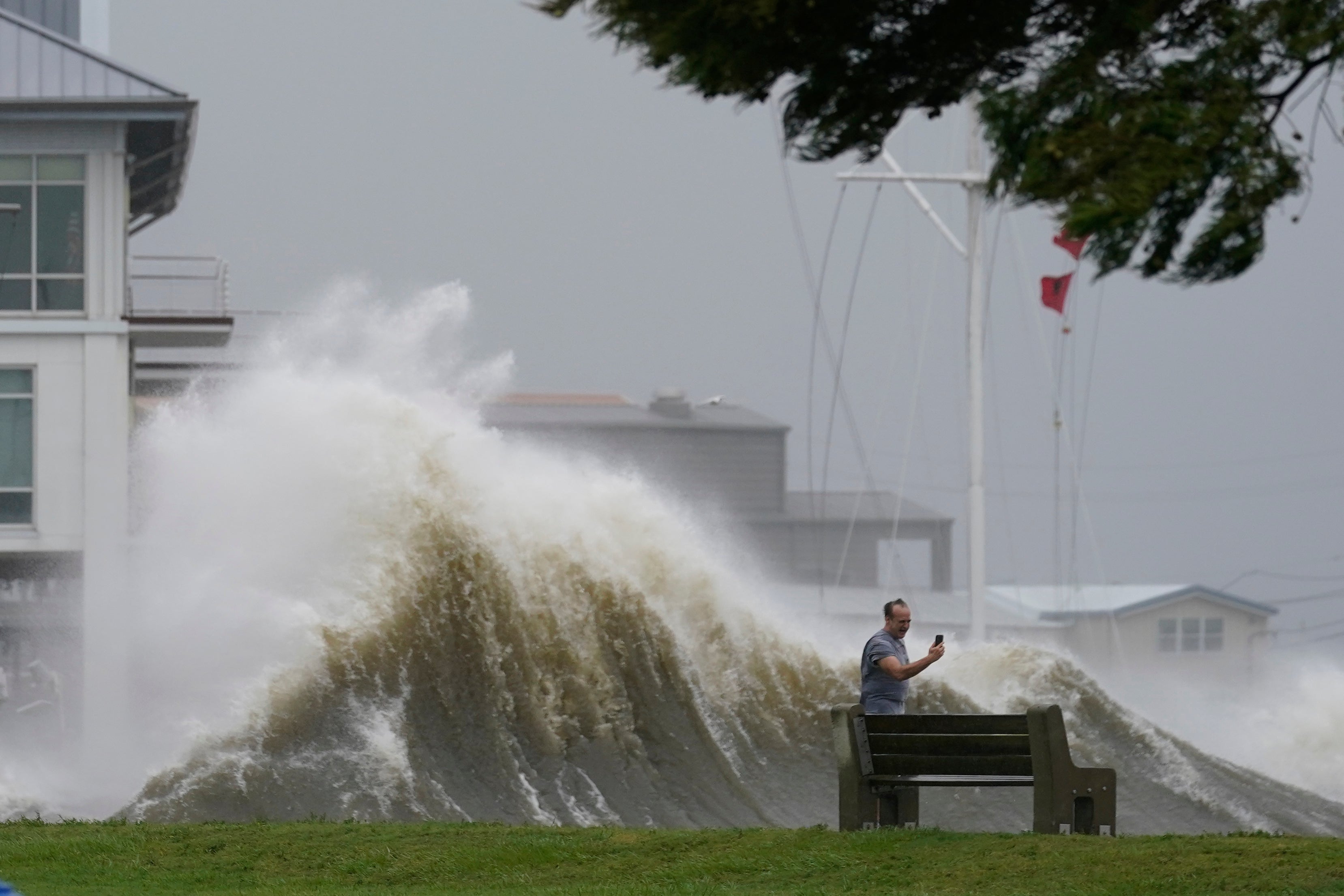Ida: Exclamation point on record onslaught of US landfalls
Hurricane Ida tied for fifth strongest storm to hit the United States based on wind speed, but the whopper of a hurricane is far more than that

Your support helps us to tell the story
From reproductive rights to climate change to Big Tech, The Independent is on the ground when the story is developing. Whether it's investigating the financials of Elon Musk's pro-Trump PAC or producing our latest documentary, 'The A Word', which shines a light on the American women fighting for reproductive rights, we know how important it is to parse out the facts from the messaging.
At such a critical moment in US history, we need reporters on the ground. Your donation allows us to keep sending journalists to speak to both sides of the story.
The Independent is trusted by Americans across the entire political spectrum. And unlike many other quality news outlets, we choose not to lock Americans out of our reporting and analysis with paywalls. We believe quality journalism should be available to everyone, paid for by those who can afford it.
Your support makes all the difference.In the past two years, hurricanes have been brewing, strengthening and hitting the United States at a record pace, and Ida will likely go down as one of the nastiest of a dangerous bunch.
While not quite record-setting, Ida is among some of strongest and fastest intensifying storms in more than 150 years of hurricane records.
When it hit Louisiana on Sunday as a Category 4 storm with 150 mph (241 kph) winds, Ida tied for fifth “with a whole bunch of other notorious storms,” for highest wind speed when making landfall in the United States, said Colorado State University hurricane researcher Phil Klotzbach. It is behind the 1935 Labor Day storm, 1969’s Camille, 1992’s Andrew and 2018’s Michael. Wind speeds sometimes get changed later after damage is reviewed with both Andrew and Michael upgraded to a Category 5 storm long after landfall.
But the true historical mark for this storm is its place as an exclamation point in an onslaught of recent storms.
When Ida made landfall, it was the 17th storm to hit the United States in the past two years, the sixth of 2021, said Jeff Masters, a former NOAA hurricane hunter meteorologist and founder of Weather Underground. Already this year, Claudette, Danny, Elsa, Fred and Henri have hit the United States, but all were tropical storms when they made landfall.
Over the past 71 years, the United States averages only three landfalling storms a year. This year’s pace is only a tad behind last year’s record pace of 11 landfalls in the United States, Masters said.
Ida’s 150 mph (240 kph) blow to Louisiana on Sunday marked the first time in recorded history that a state got back-to-back years of 150 mph winds or more. Last year, Hurricane Laura hit Louisiana with 150 mph winds, said meteorologist Steve Bowen, head of Catastrophe Insight for the risk insurance and consulting firm Aon.
Ida is tied with Laura, 2004's Charley and storms in 1932, 1919, 1886 and 1856 for hitting the United States with 150 mph winds.
Ida exploded in intensity going from 85 mph (137 kph) to 150 mph in just 20 hours, easily exceeding the official threshold for a rapidly intensifying storm of gaining at least 35 mph (56 kph) in 24 hours. Ida actually did this twice in its short lifetime.
In one way, Masters figures Ida set a record. Ida was listed at 85 mph 26 hours before landfall (going up to 100 mph 23 hours before landfall). Using the 85 mph figure, that would mean the hurricane increased 65 mph (105 kph) in the 24 hours before landfall, tying the record set in 2007 by Humberto for most rapid intensification in the day before landfall.
In addition to wind speed, meteorologists rank hurricanes by central pressure with the lower the barometric pressure the stronger the storm. By this measurement, Ida on landfall didn’t quite rank as high with a pressure of 930 millibars. It was tied for the ninth strongest storm on landfall, far behind the 1935 Labor Day storm’s 892 mb and even 2005’s Katrina, which had lower wind speeds but a pressure of 920 millibars.
Using millibars of pressure, Ida dropped 56 mb in 24 hours, something only nine other Atlantic hurricanes have done before, and Ida was the only one to do it in the day before landfall, said University of Colorado meteorology researcher Sam Lillo.
Deaths and damage from the storm are nowhere near being counted yet. The five costliest U.S. storms on record, adjusted to 2021 dollars, are 2005's Katrina at $176.3 billion in damage, 2017's Harvey at $136.3 billion, 2017's Maria at $98.1 billion, 2012's Sandy at $77.4 billion and 2017's Irma at $54.5 billion.